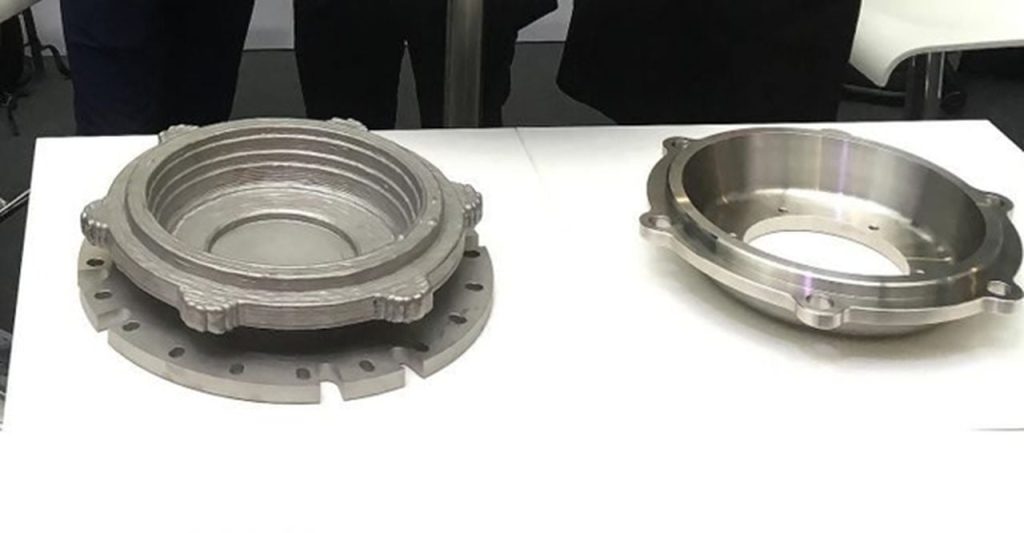
Charles R. Goulding and Preeti Sulibhavi examine how several 3D print technologies and companies could aid the efforts in Ukraine.
The war in Ukraine has taken a huge toll on its citizens, fighting to maintain a hold of the land they call home. Aside from their grit and determination that unifies them as a people, their national rail system, Ukrzaliznytsia, is also responsible for helping to unify Ukraine. A recent piece published in the New York Times Magazine this month put the Ukrainian rail system front and center, in an article titled, “The 15,000-mile Lifeline.”

Ukrzaliznytsia, often referred to as a “country within a country” because of its vast reach and a 230,000-employee load, demonstrates how trains are the infrastructure backbone of Ukraine, especially during the war that is raging on. With six regional branches, the Ukrzaliznytsia is helping the Ukrainians determine how many tanks passed the border, how many helicopters were overhead and how many paratroopers were arriving through the use of its railway traffic controllers and safety officers. The railway line has become a lifeline in Ukraine.
3D Printing and Railways
We have covered the European rail system called initiative called Mobility Goes Additive (MGA), previously. We have covered Wabtec’s 3D printing activities with the Freight Rail Research Institute, as well as the US’ recent railway labor deal and 3D printing, all on Fabbaloo. So, the railway industry is no stranger to the 3D printing technology.
Recently, Wabtec has donated US$100,000 to support Ukraine refugee relief efforts. In addition, Wabtec’s containerized 3D printing units that have been sent to Ukraine can also be used to fabricate parts and components in real time during the war effort.

The Canadian Class I Railroads has committed US$2.3M to support humanitarian efforts in Ukraine and the surrounding region, with the Canadian Pacific (CP) donating US$500,000, specifically to the Red Cross’ efforts in the Ukraine.
But, when the Kyiv School of Economics estimated that in September 2022 the Ukrainian railway infrastructure had incurred damages amounting to US$4.3B, we took notice.

There is a myriad of ways in which 3D printing can play a role in repairing the damages to the Ukrzaliznytsia. Instead of waiting for replacement parts or components, the Ukrainians could use 3D printing to fabricate the required parts.
Siemens, a company specializing in intelligent traffic systems and rail technology, has adopted 3D printing at its RRX Rail Service Center to produce complex tooling, in addition to spare parts.

In one example, the new maintenance depot has 3D printed an essential connector tool used in train bogie maintenance (the bogie is the chassis or structure that bears the wheelset axle). It is quite difficult to produce, using conventional methods, because the tool has a complex shape that requires a high degree of customization.
Rail bogies weigh several tons, which means they need to be made with robust and durable materials that can withstand significant stress exerted when the train is moving.
As an alternative, the team at the center used Stratasys’ FDM technology and an industrial-grade ULTEM 9085. 3D printing allowed Siemens Mobility to leverage the unique customization benefits of 3D printing and replace traditional manufacturing methods for this tooling application.
The Research & Development Tax Credit
The now permanent Research and Development (R&D) Tax Credit is available for companies developing new or improved products, processes and/or software.
3D printing can help boost a company’s R&D Tax Credits. Wages for technical employees creating, testing and revising 3D printed prototypes can be included as a percentage of eligible time spent for the R&D Tax Credit. Similarly, when used as a method of improving a process, time spent integrating 3D printing hardware and software counts as an eligible activity. Lastly, when used for modeling and preproduction, the costs of filaments consumed during the development process may also be recovered.
Whether it is used for creating and testing prototypes or for final production, 3D printing is a great indicator that R&D Credit eligible activities are taking place. Companies implementing this technology at any point should consider taking advantage of R&D Tax Credits.
Conclusion
When there is a will, there is a way. With the toll the War in Ukraine has seized, it is an inspiring development that the railway system in the country has helped to provide artillery, take people to safety, and unite the country in a way that we least expected it to. We believe this can be further advanced with the help of 3D printing at this time.

